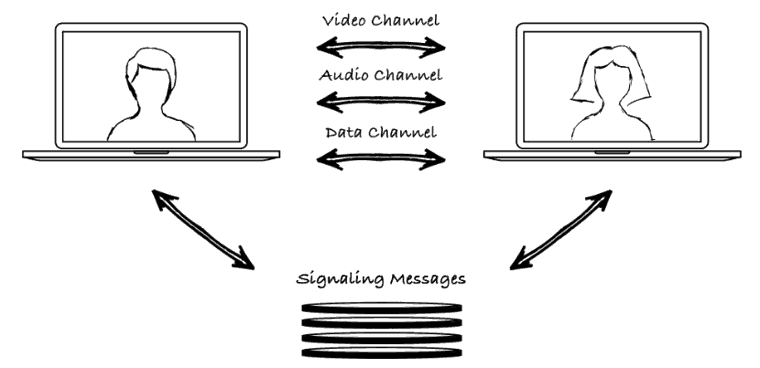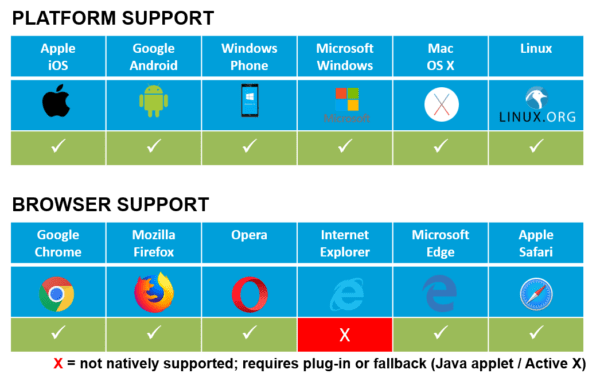
By: Vicken Karaoghlanian, LENSEC Vice President of Product
WebRTC is growing as a new emerging technology. The LENSEC staff closely observes emerging technology trends for video streaming, including WebRTC. As it is proven useful, our engineers plan to adopt them in our product offerings. WebRTC has been in use since 2011 and is recently gaining traction as an internet communication tool for using common protocols. The applications using this technology include the following:
- Video Conferencing
- Social Media
- Interactive Online Gaming
- Peer-to-Peer (P2P) Data/File Transfer
- Secure Video Streaming

WebRTC is a free, open-source project that provides browsers and mobile applications with Real-Time Communications (RTC) capabilities via simple Application Programming Interfaces (API). Backed by big companies like Google, Microsoft, Mozilla Foundation, and Opera, the WebRTC project is driven by this mission in mind: To enable rich, high-quality RTC applications to be developed for the browser, mobile platforms, and IoT devices, and allow them all to communicate via a common set of protocols.

WebRTC is Becoming an HTML5 Standard
The project is currently being standardized by W3C, the World Wide Web Consortium. WebRTC is also being progressively becoming supported by all the major browser platforms. This interesting piece of technology is being rolled out as part of HTML5 specifications in modern web browsers.
In the past, LENSEC has leveraged different technology for video streaming in Perspective VMS®. The evolution of the PVMS streaming stack has followed this pattern over time:
The latest release of Perspective VMS® will leverage WebRTC without the use of any plug-ins. The architecture of WebRTC supports the streaming service in Perspective VMS®. PVMS relies on native JavaScript API to display video streams in the WebRTC equipped browser.
This communication protocol is one of the most secure ways to protect video streams. It will ensure your camera feed is not intercepted by another server. In addition, it will provide end-to-end encryption and P2P architecture.
IT staff only needs to open one port to get WebRTC to work. Use of this port is essential for the signalling process to communicate. The advantages of this technology are abundant.

Here are a few:
- No Browser Plugins Required
- Relies on Javascript and Browser-Native API to Enable Streaming
- Peer-to-Peer (P2P) Communication Means No Proxy Server is Needed
- Transfers Data, Audio, and Video
- Encrypted with AES-128
- Supports TCP/UDP Options
- Available in Modern Web Browsers
- Supports Multiple Codecs
WebRTC Improves Video Streaming Latency
In the surveillance world, experts can’t talk about video streaming without talking about latency. The good news is that low-latency is where WebRTC shines. The technology was designed from the ground up for real-time communication. Typically, streaming protocol variants such as HLS and DASH deliver streams with around 2 seconds latency. This is because HTTP-based protocols buffer chunks of data before sending it to the user. The chunk size plays significant role in introducing this latency.
WebRTC on the other hand uses UDP without the need to create data chunks, subsequently delivering stream packets almost immediately. In LENSEC’s testing labs, our engineers successfully streamed with latency below 500 milliseconds.

The disadvantages are minor, and expected in today’s technology environment. Here are a few worth considering:
- Internet Explorer is not Supported
- Older Browsers are not Supported
- WebRTC is Still Under Development
- Implementation Might Break with a Browser Update
The LENSEC development team is previewing WebRTC in the Perspective VMS® 3.5.0. Web Sockets, our current standard for video streaming, is still available and will be the default standard in our streaming services. However, we are evolving our video streaming technology stack from packet segmentation using Web Socket to WebRTC. Security integrator partners and end-users wanting to leverage WebRTC will be able to turn the feature on or off, depending on their needs.
WebRTC brings noteworthy features to Perspective VMS®. Here are a few we will achieve using WebRTC in PVMS:
- Ultra-Low Latency Streaming (Less Than 1 Second)
- Secure Video Stream with End-to-End Encryption
- Media is Protected from Interception
- H.264 Video Streaming on iPhones
Our partners and customers interested in previewing WebRTC in the latest version of WebRTC will have the option of enabling it in PVMS v3.5.0. Our technical support team and engineering staff can assist with this transition. Our team will be able to easily activate WebRTC or deactivate it, as needed. If our ongoing testing proves WebRTC to be dependable in Perspective VMS®, then it will become widely available in future product releases. For now, LENSEC is planning this to be a preview release. We will plan a more concrete integration in the future.
If you are interested in learning more about WebRTC and Perspective VMS®, please feel free to contact us. We’d like to talk with you and your team about how we can implement these technologies in your security environment.
